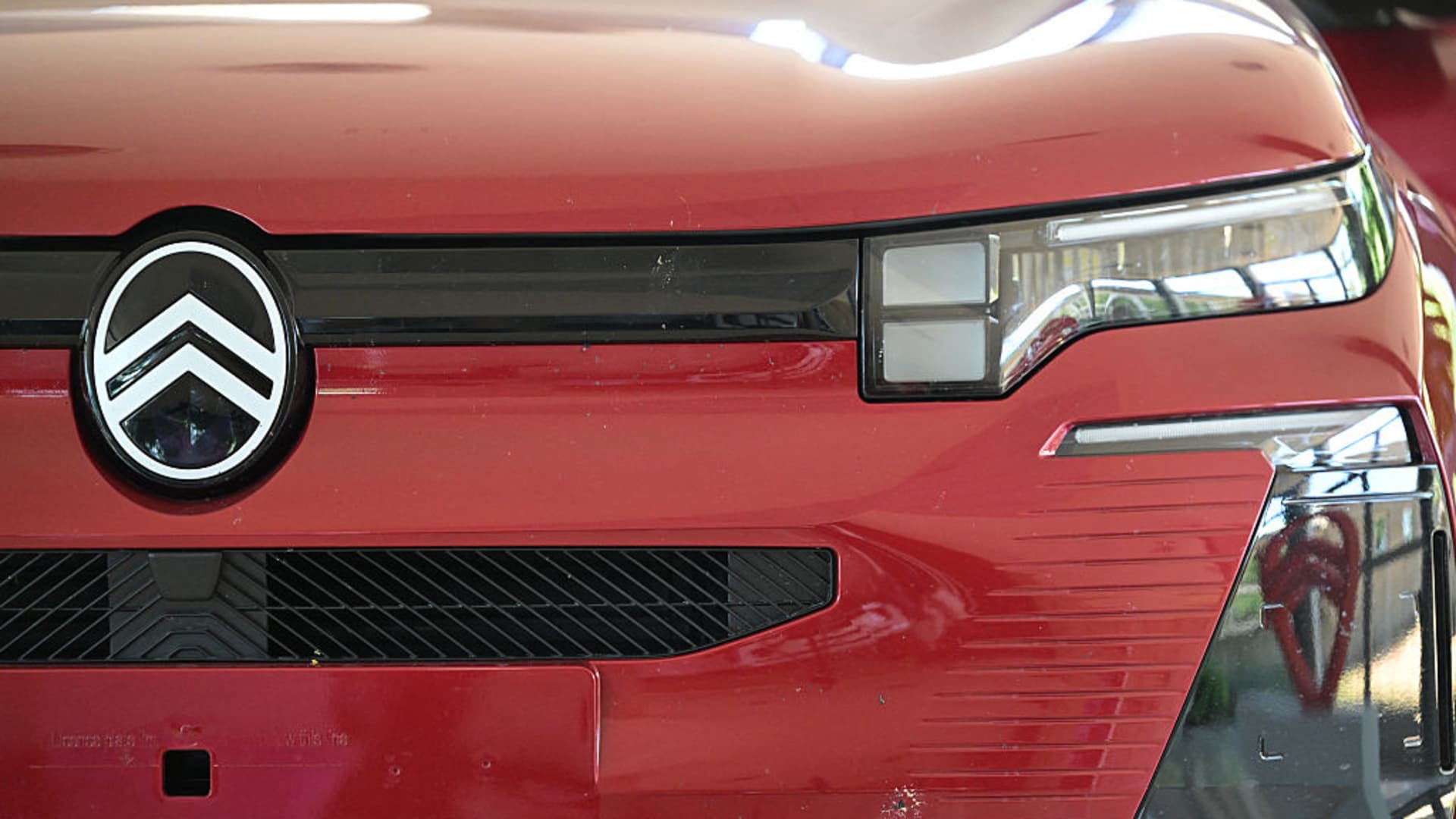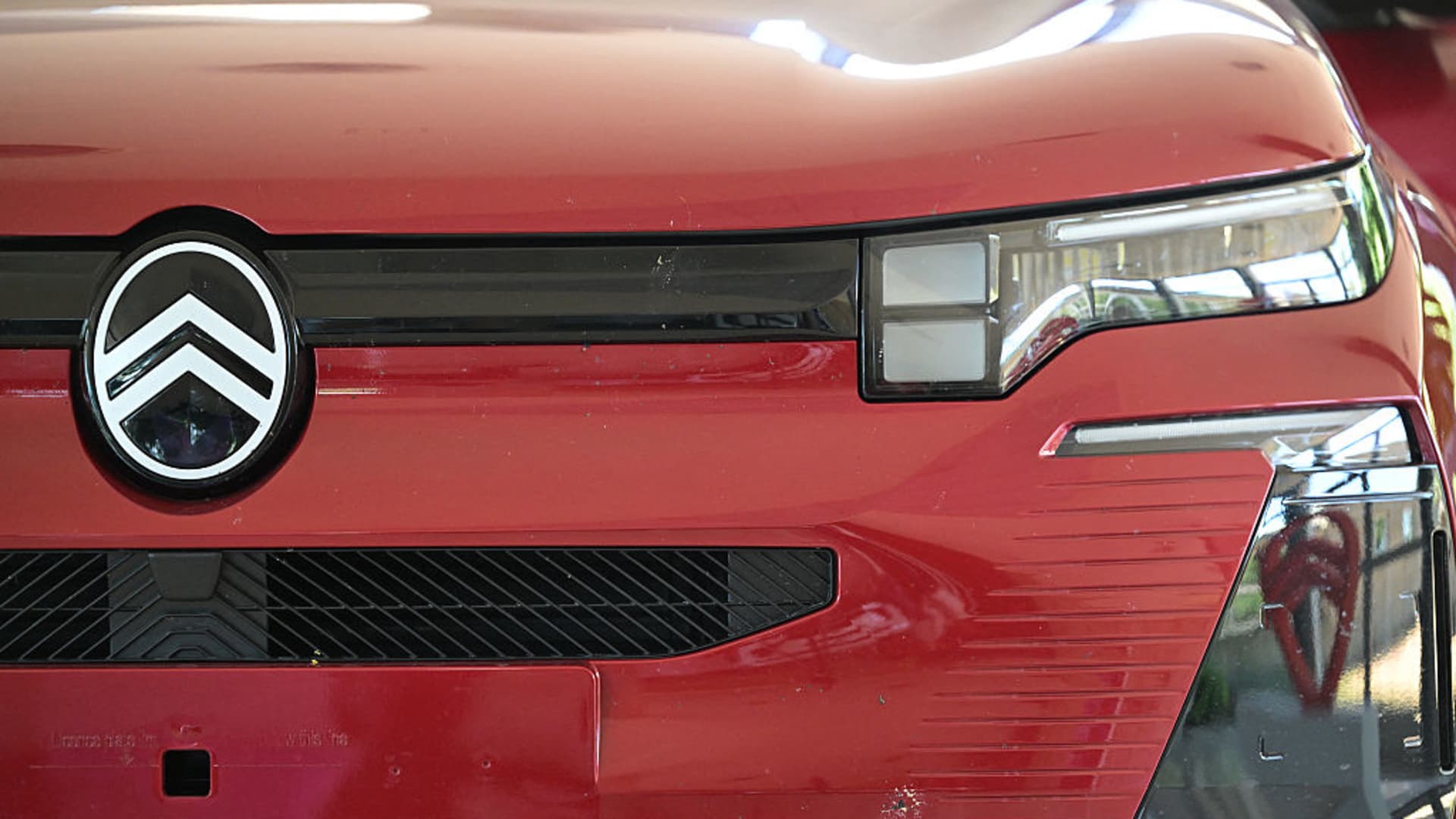The Crumbling Colossus: How Trump’s Tariffs Decimate Europe’s Automotive Industry
A Collision Course
The global economic landscape in 2025 is a battleground of trade wars and protectionist policies. At the heart of this storm is the European automotive industry, once a beacon of innovation and economic strength, now struggling to survive under the weight of Donald Trump’s tariffs. The industry, which has long been a cornerstone of Europe’s economic might, is facing an existential crisis. The impact of these tariffs is not just economic; it’s social, political, and technological, reshaping the very fabric of European society.
The Tariff Tsunami: A Breakdown of the Damage
The most immediate and devastating weapon in Trump’s trade arsenal is the tariff. The 25% levy on EU auto imports, a stark increase from the previous 2.5%, has sent shockwaves through the industry. But the damage doesn’t stop there. Tariffs on car parts, steel, and aluminum have further squeezed European automakers, disrupting supply chains and increasing costs.
Increased Costs
The most immediate effect of the tariffs is a surge in the cost of exporting cars to the United States. This added expense makes European vehicles less competitive in the U.S. market, forcing companies to either absorb the cost, eating into profits, or pass it on to consumers, reducing demand. Either way, the result is a significant blow to the bottom line.
Disrupted Supply Chains
The tariffs on car parts and raw materials disrupt intricate supply chains that have been meticulously optimized over decades. European automakers source components from all over the world, and these tariffs add layers of complexity and cost, undermining efficiency. This disruption is not just a temporary setback; it’s a fundamental challenge to the industry’s business model.
Reduced Sales
Higher prices and reduced competitiveness inevitably lead to lower sales in the crucial U.S. market. This forces European automakers to scale back production, leading to plant closures and job losses. The ripple effects of these closures are felt not just in the automotive industry but across the broader economy.
Eroding Profit Margins
Even if automakers attempt to maintain sales volume, the need to absorb tariff costs will inevitably erode their profit margins. This jeopardizes future investments in research and development, threatening the industry’s long-term competitiveness and innovation.
The European Giants Stumble: Case Studies in Crisis
The impact of Trump’s tariffs is not evenly distributed. Certain European automotive giants, particularly those with a heavy reliance on the U.S. market, are bearing the brunt of the pain. The trading updates and corporate earnings reports paint a grim picture.
Germany’s Auto Sector in Peril
Germany, the engine of the European economy and home to brands like BMW, Mercedes-Benz, and Volkswagen, is particularly vulnerable. These companies have invested heavily in exporting to the U.S., and the tariffs represent a significant blow to their business models. The tariffs have directly led to a significant slowdown in their production volume, with some companies reporting losses for the first time in decades.
Ripple Effects Across the EU
The pain extends beyond Germany, impacting automotive industries in other EU countries, such as France, Italy, and Spain. The interconnected nature of the European economy means that a slowdown in one country inevitably affects its neighbors. This creates a negative feedback loop, further exacerbating the crisis.
Beyond the Balance Sheet: The Human Cost
The impact of Trump’s tariffs extends far beyond corporate boardrooms and stock market fluctuations. The human cost is very real and profound.
Job Losses
As automakers scale back production and close plants, thousands of workers face unemployment. This not only creates financial hardship for families but also has a ripple effect on local economies that depend on the automotive industry. The loss of jobs in the automotive sector can lead to a domino effect, with suppliers and related industries also feeling the pinch.
Reduced Investment
Facing shrinking profits and uncertain prospects, European automakers are forced to cut back on investments in new technologies, such as electric vehicles and autonomous driving. This jeopardizes their long-term competitiveness and threatens to cede leadership in these emerging fields to rivals in China and the United States. The loss of investment in innovation is a particularly worrying trend, as it undermines the industry’s ability to adapt to future challenges.
Social Unrest
Widespread job losses and economic hardship can lead to social unrest and political instability. The automotive industry is a major employer in many European regions, and its decline can have profound social consequences. The political fallout from this economic crisis could reshape the European political landscape, with populist and anti-establishment parties gaining ground.
EU’s Retaliation and a Standoff: The Trade War Intensifies
The European Union has not stood idly by in the face of Trump’s tariffs. In response, the EU has implemented its own retaliatory tariffs on a range of U.S. goods, targeting sectors like agriculture, steel, and consumer products. The tit-for-tat escalation has only intensified the trade war, creating further uncertainty and disruption for businesses on both sides of the Atlantic.
The EU’s Approach
The EU’s approach has been a mix of defensive measures and attempts at negotiation. While retaliatory tariffs aim to inflict economic pain on the U.S., the EU has also sought to engage in dialogue with the Trump administration to find a negotiated solution. However, these efforts have been largely unsuccessful, as Trump remains steadfast in his protectionist stance.
The Standoff
The standoff between the U.S. and the EU has created a climate of uncertainty, making it difficult for businesses to plan for the future. The lack of a clear resolution to the trade dispute has led to a sense of paralysis in the industry, with companies reluctant to make long-term investments or strategic decisions.
The Shifting Sands of Global Trade: A New World Order?
Trump’s tariffs are not just a bilateral dispute between the U.S. and Europe. They are part of a broader trend towards protectionism and economic nationalism that is reshaping the global trade landscape. The rise of China, the Brexit vote, and the growing dissatisfaction with globalization in many developed countries are all contributing to this trend.
A Fragmented World
In this new world order, traditional trade alliances are weakening, and countries are increasingly pursuing their own self-interests. This creates a more fragmented and uncertain environment for businesses, making it more difficult to plan for the future and invest in long-term growth. The days of seamless global supply chains and free trade are giving way to a more fragmented and protectionist world.
The Challenge Ahead
The challenge for the European automotive industry is to adapt to this new reality. This will require a fundamental shift in strategy, focusing on diversifying markets, investing in innovation, improving efficiency, and strengthening regional supply chains. The industry must also navigate the complex political landscape, engaging with policymakers to shape a more favorable trade environment.
A Bleak Outlook: The Future of Europe’s Automotive Industry
The future of Europe’s automotive industry is clouded with uncertainty. If Trump’s tariffs remain in place, the industry faces a prolonged period of decline, characterized by reduced sales, job losses, and diminished competitiveness. The long-term consequences could be severe, potentially undermining Europe’s position as a global leader in automotive innovation.
The Best-Case Scenario
The best-case scenario involves a negotiated settlement between the U.S. and the EU, leading to the removal of tariffs and a restoration of trade relations. However, given Trump’s track record, this seems unlikely. More realistically, the European automotive industry will need to adapt to a new reality of higher trade barriers and increased competition.
Adapting to the New Reality
Adapting to this new reality will require a fundamental shift in strategy. European automakers must diversify their markets, reducing reliance on the U.S. by expanding sales in other regions, such as China, Asia, and Latin America. They must also invest in innovation, focusing on developing cutting-edge technologies, such as electric vehicles and autonomous driving, to maintain a competitive edge.
Strengthening Regional Supply Chains
Improving efficiency and streamlining operations will be crucial to offsetting the impact of tariffs. This includes sourcing more components and raw materials from within Europe to reduce dependence on global supply chains. Strengthening regional supply chains will not only reduce the impact of tariffs but also make the industry more resilient to future disruptions.
Conclusion: A Crossroads of Destiny
Europe’s automotive industry stands at a crossroads. The Trump administration’s tariffs have dealt a heavy blow, but the industry’s fate is not yet sealed. By adapting to the new realities of global trade, investing in innovation, and forging new alliances, Europe’s automotive giants can weather this storm and emerge stronger. However, failure to adapt could lead to a long and painful decline, with far-reaching consequences for the European economy and society. The road ahead is undoubtedly challenging, but the future of a once-mighty industry hangs in the balance. The choices made today will shape the industry’s trajectory for decades to come, determining whether it remains a global leader or fades into obscurity. The stakes could not be higher.












